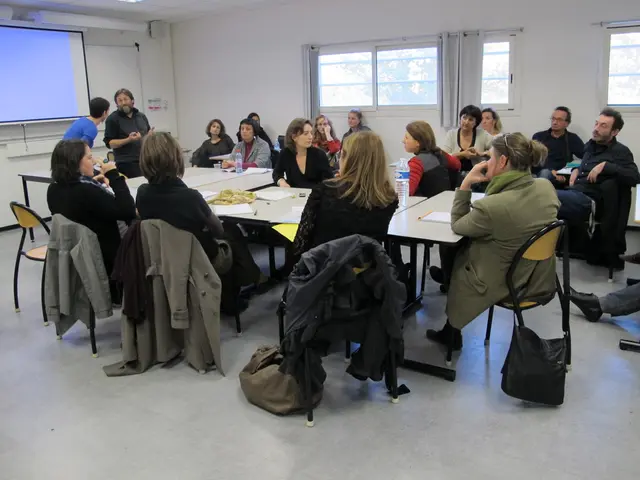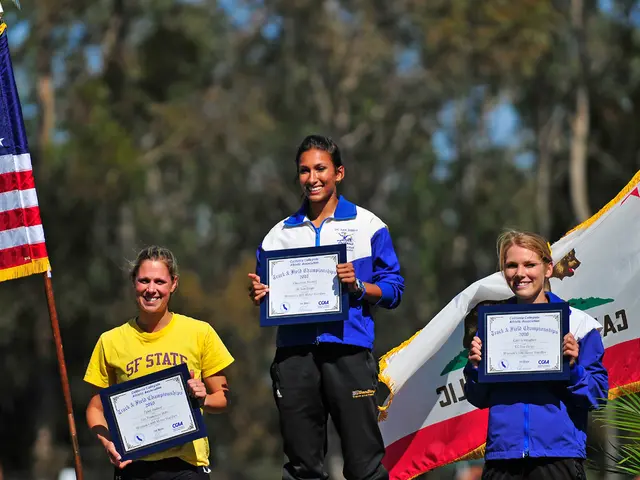Forest adaptation amidst climate turbulence
Pforzheim City Forest Embraces Sustainable Management Practices
The Pforzheim city forest, a cherished urban oasis, is implementing innovative strategies to combat climate change and promote biodiversity. Under the guidance of new head of the forest administration, Mario Seefelder, and city foresters, the forest is being managed with a long-term, holistic goal.
One of the key strategies is the Old and Dead Wood Concept. This approach involves maintaining and nurturing old and dead wood in the forest, providing habitats for a variety of species and contributing to carbon storage. By retaining such wood, the forest is not only supporting biodiversity but also aiding in the fight against climate change.
Another strategy is the promotion of warm-loving and drought-resistant tree species. As the city forest adapts to ongoing climate changes such as increased temperatures and drought conditions, the management is actively encouraging tree species that can thrive in these conditions. This ensures the resilience and sustainability of the forest ecosystem under future climate scenarios.
Deer browsing pressure can hinder forest regeneration and biodiversity. To address this issue, Weiser fences are being used to control deer browsing, protecting young trees and enabling a more diverse and healthy forest structure to develop.
These integrated approaches collectively enhance the forest's resilience to climate impacts while fostering a rich biodiversity typical of a healthy urban forest. The forest classroom, a log cabin constructed entirely from Pforzheim wood, will serve as a hub for forest pedagogical events starting from fall/winter 2023. This educational facility aims to provide children with hands-on learning experiences about the forest and nature in a playful way, fostering enthusiasm for the environment.
The city forest continues to serve as a CO2 sink, helping in the fight against climate change, a source of drinking water for the city, and a recreational area for Pforzheim residents. Logging in the city forest has primarily focused on sick and dead trees due to drought and bark beetle infestation in the last five years.
Recently, the drought period has led to the decline of pine trees in the Pforzheim forest, allowing oak trees and other warm-loving, drought-resistant species to take over. In order to promote the growth of these new tree species, the impact of deer browsing on the forest is being addressed through the use of Weiser fences.
Approximately 80 events with schools and kindergartens are expected to take place at the forest classroom annually. On a 3.5 kilometer walk through the city forest, 25 council members and administration staff, including Environmental Mayor Sibylle Schuessler, got an impression of the impacts of climate change and future tasks in the city forest. The use of Weiser fences, built in all hunting districts since 2020, selectively excludes deer from an area of 12 by 12 meters to observe the influence on forest development.
Securing and promoting biodiversity is a key task of the city forest, in addition to producing valuable wood. The Pforzheim city forest's commitment to sustainable management practices and education is a testament to its dedication to preserving this ecologically valuable forest stock for future generations.
- The Old and Dead Wood Concept, a strategy implemented in the Pforzheim city forest, is a part of the science of environmental-science, contributing to carbon storage and promoting biodiversity, thereby aiding in the fight against climate-change.
- To ensure the resilience and sustainability of the forest ecosystem under future climate scenarios, the city forest is promoting warm-loving and drought-resistant tree species, which is an essential part of the learning process in education-and-self-development.
- The forest classroom, a log cabin constructed from Pforzheim wood, serve as a hub for forest pedagogical events and a means for children's learning about the forest and nature, fostering enthusiasm for the environment.




